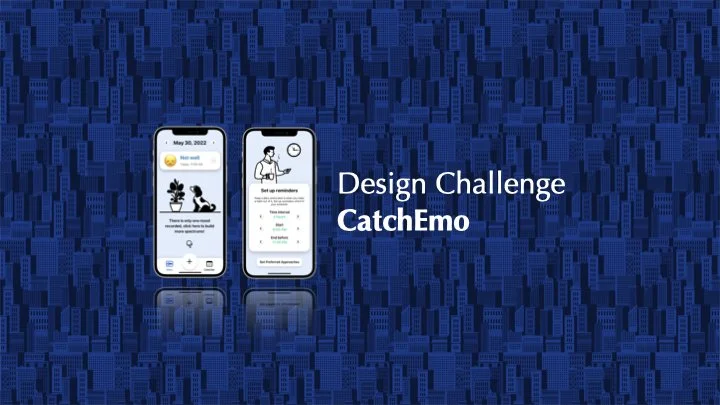What is DietWave?
A calorie calculator & diet suggestion mobile app
Who is DietWave for?
People sensitive to body weight
Project duration
4 Month - Aug to Dec 2021
Within the contemporary societal landscape, obesity emerges as a pervasive and extensively debated concern. Upon joining Boohee Tech, my responsibility in leading new feature design initiatives heightened my awareness of the multifaceted challenges associated with obesity, driven by comprehensive data research conducted in 2021.
Nearly 1 / 3 adults (35.7%) are overweight
More than 2 / 5 adults (44.4%) have obesity
About 1 / 10 adults (10.2%) have severe obesity
4,000,000 people died from obesity-related diseases
Let’s Nail Down the Problems
Amidst the COVID-19, remote work often leading to a sedentary lifestyle.
The lack of physical activity poses a potential concern.
Coupled with the challenge of adopting unhealthy eating habits.
Our Solution
Promote Healthy Eating Habits: Offer educational resources on nutrition and healthy eating habits. Encourage employees to make mindful food choices and provide information on maintaining a balanced diet.
How to build a healthy and diet way for people to eat during work from home?
“If you want to lose excess weight, the most important thing is to control your daily intake of food and drink. Creating Calorie deficit is the key to losing weight and drinking water as this will boost your metabolism.”
So we started a quick user interview
6 questions
26 interviewees
Do you …
always pay attention to the changes in your body shape?
often self-cook and take care of the food combination?
roughly calculate your daily calorie intake?
know what the calorie deficit is?
go to gym or do some exercises?
remind yourself to drink water 8-10 glasses?
55%
of individuals are mindful of their physique (body shape).
47%
of individuals track their daily calorie consumption.
39%
of individuals pay attention to their dietary choices.
35%
people drink water up to the USNAS recommended (3L per day).
Competitors Analysis
Prior to embarking on the unique position strategy for DietWave, a thorough competitive product analysis was conducted. Platforms such as Diet and MyPlate emerged as commendable advocates for dietary concerns. Over a month, I extensively utilized each platform, meticulously assessing their pros and cons. Subsequently, I integrated their respective advantages into DietWave while introducing novel features to enhance its overall functionality.
Prevents user from overeating
Upload meal picture to calculate
Set daily drinking water reminder
Provides health cook recipes
Persona Design
Informed by user research and a unique positioning strategy, I crafted a persona for DietWave named Brandon. With a typical workday spanning 10 hours, he expresses concern about his current body shape and seeks a healthy diet solution to manage his daily calorie intake.
User Scenario
Brandon is feeling unsatisfied of himself in the mirror.
Tons of work prevent him from going to gym.
Beside lack of exercise, he also like eating junk food.
He decides to get rid of the junk food.
He is using DietWave to achieve goals.
Daily check the food and calories intake.
In the user testing, we encounter microcosms that reflect aspects of our daily lives. Witnessing oneself in these scenarios allows for a comprehensive understanding, effectively capturing the shared pain points experienced by many individuals.
After we transfer wireframe to low fidelity, we had a user test based on low fidelity prototype. 7 interviewees 2 hours and 4 iterations.
Iteration 1: Focus on Calorie Deficit
Here is one of iterations, we Combined 4 sketches in 1 screen. Improved Visual hierarchy to focus the calorie on emphasis number, and keep user from overeating.
Iteration 2: Focus on Meal & Number
Here is another iteration that we Simplified page, and reduce to one meal on screen to demystified usability. Add more features in add button, I will pitch it more later.
HIGH FIDELITY PROTOTYPE DEMO
1. Register & Setup
2. Edit Plan
3. Record Calorie
4. Add Food
5. Edit Ingredient
6. Calorie Analysis
THREE HEALTHY FEATURES
Drink Water Reminder
Weight Analysis
Diet Meal Recommend
Color & Typography
Warm colors evoke a sense of calorie-burning, serving as a distinctive identifier for the design style.
Maggie, owner of "Sunrise Delights," infused her bakery with warmth through a palette of red, orange, and golden-brown pastries. The "Sunrise Tart," with its red berry compote, symbolized dawn, while the "Golden Glow Cupcake" captured the morning sun. The "Caramel Embrace Cookie," adorned with golden swirls, offered a cozy embrace. Customers flocked to savor not only the delectable flavors but also the inviting atmosphere. Maggie's warm-colored treats transformed Sunrise Delights into a cherished haven, where every bite felt like a sun-kissed delight, bringing people together to share stories in the heart of the bustling city.
Next Steps
Fitness: Integrating fitness tips that utilize food icons can provide a quantifiable measure of calories burned for each exercise.
Recipe Delivery: Upon a single click, users can add their favorite menu recipe and have it conveniently delivered through collaboration with nearby grocery or takeout services.
More Work

































